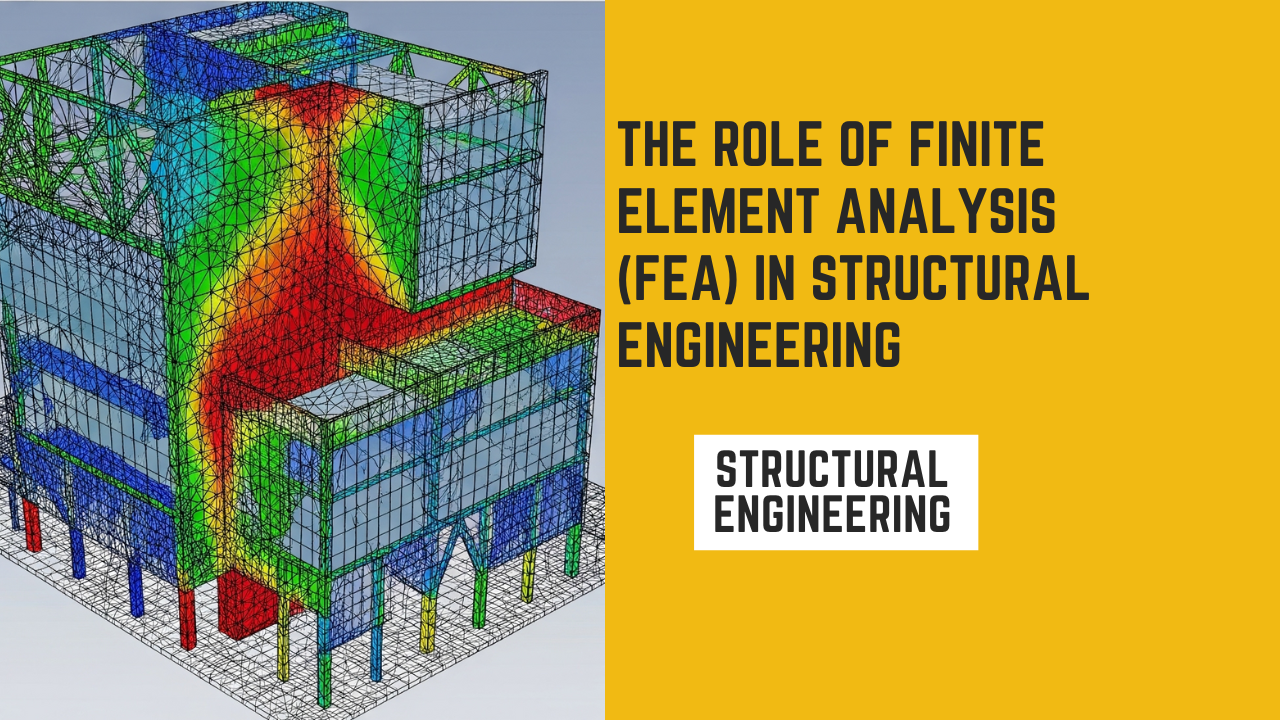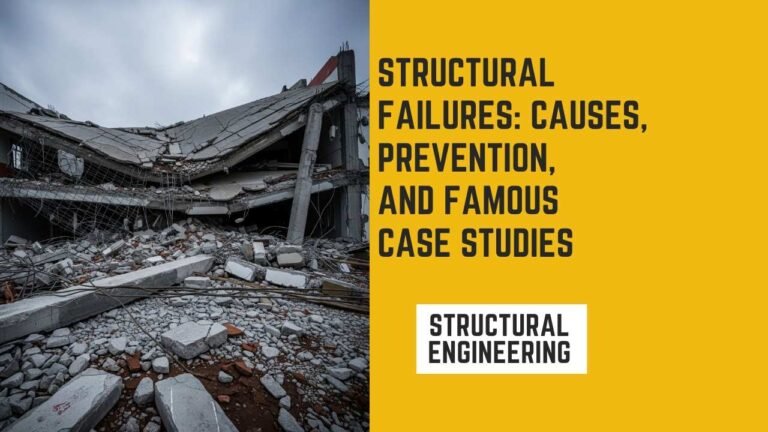The Role of Finite Element Analysis (FEA) in Structural Engineering

Introduction
In the ever-evolving field of structural engineering, innovation and precision go hand in hand. One technological breakthrough that has reshaped how engineers design, analyze, and optimize structures is Finite Element Analysis (FEA). As a computational powerhouse, Finite Element Analysis gives structural engineers the ability to break down complex structures into smaller, manageable components called elements that can be assessed for stress, strain, deformation, and beyond. This empowers data-driven decisions, elevates safety, and dramatically cuts development time and cost.
In this article, we’ll explore how finite element analysis has become integral to modern structural engineering, from its origins to its applications, advantages, challenges, and future trajectory. Dive in to see how FEA continues to push boundaries in building safer, smarter and more sustainable infrastructure
1. What is FEA, and where did it come from?
Finite Element Analysis (FEA) is a numerical method that divides complex physical structures into a mesh of smaller elements. Equations governing physical behavior—such as elasticity, vibration, or thermal diffusion—are solved for each element, then assembled into global matrices like the stiffness matrix (K), displacement vector (u), and load vector (F), resulting in equations such as K·u = F.
The concept traces back to a pioneering structural engineer, Ray W. Clough, who coined the term “finite elements” around 1960 and advanced the method’s application to dynamic structural analysis. Over decades FEA has matured into a fundamental tool across civil, aerospace, automotive engineering and more

2. Why Structural Engineers Rely on FEA
2.1 precision & Insight in Design
Finite element analysis enables detailed modeling of geometries, materials, and loads—far beyond traditional hand calculations or simplified assumptions. Engineers can predict stress concentrations, deformation zones, and fatigue-prone regions with remarkable accuracy.
2.2 safer, smarter structures
By simulating how a building, bridge, or component responds to real-world load cases—even extreme scenarios like seismic or wind loads—FEA helps identify vulnerabilities before construction begins
2.3 Efficiency in Time & Costs
Virtual prototyping through FEA cuts down on expensive physical models and test iterations. Engineers can simulate design changes rapidly—sometimes within hours—substantially shortening development cycles
2.4 Material-Savvy Optimization
Finite element analysis empowers the selection of efficient materials and dimensions. You can iterate to minimize material use while ensuring structural integrity, leading to leaner, eco-friendlier, and cost-effective designs.
2.5 Compliance and Regulatory Assurance
Finite Element Analysis simulations help confirm that structures meet industry codes and safety standards, de-risking projects before approval and construction.
3. Key Applications of FEA in Structural Engineering
3.1 Building & High-Rises
Structural engineers model load-bearing frames, shear walls, foundations, and environmental loads—like seismic or wind—to optimize stability and resilience.
3.2 Bridges & Infrastructure
Simulations assess behavior under traffic, thermal cycles, vibration, or dynamic effects. Finite element analysis helps engineers fine-tune design and reinforcement to ensure longevity.
3.3 Offshore Platforms & Subsea Pipelines
Complex engineering feats such as offshore platforms undergo finite element analysis to guarantee resistance against brutal sea conditions while saving weight and cost. Subsea pipelines are similarly optimized for pressure, temperature, and fatigue.
3.4 Model & Dynamic Analysis
Through modal analysis, FEA calculates natural frequencies and vibration modes—critical for anticipating resonant behavior that can cause fatigue or failure.
3.5 structural health Monitoring & Digital Twins
Finite Element Analysis integrates with sensor data to create digital twins—real-time virtual replicas of structures. Predictive methods can estimate unmeasured strain patterns, enhancing maintenance planning.
3.6 Multiphysics & BIM Integration
FEA can be coupled with Computational Fluid Dynamics (CFD) for fluid-structure interaction, tied into BIM workflows for seamless design handoffs, and paired with optimization algorithms.
4. Benefits at a Glance
| Benefit | Description |
| Accurate Predictions | Captures stress/strain, buckling, vibrations precisely |
| Design Optimization | Streamlined, material-lean, performance-driven outcomes |
| Time and Cost Reduction | Fast virtual iterations, fewer prototypes |
| Safety and Compliance | Simulation-validated reliability, code adherence |
| Enhanced Collaboration | BIM-FEA integration, shared analytical models |
| Sustainability | Less material waste, extended lifecycle |
5. Challenges & Best Practices
5.1 Computational & Modeling Complexity
FEA demands computing power and expertise. Poor mesh quality or wrong boundary conditions can mislead results—this is the “garbage in, garbage out” risk.
5.2 validation & Convergence
Engineers must validate FEA outcomes against experiments or analytical benchmarks. Mesh refinement and sensitivity studies are essential to establish convergence and confidence
5.3 user expertise
Proficiency in FEA software paired with a deep understanding of mechanics elevates an engineer’s value. FEA should supplement—not replace—sound engineering judgment.
6. FEA’s Future: Innovation on the Horizon
- AI & Machine Learning Integration
Surrogate modeling, optimization, and AI-driven workflows are beginning to reduce computational loads and explore vast design spaces efficiently.
- Additive Manufacturing Synergy
As 3D printing embraces complex geometries, FEA becomes critical for designing manufacturable, optimized parts.
- Digital Twins & Real-Time Monitoring
With real-time sensor inputs feeding FEA-based models, infrastructure can be monitored and predicted ahead of failure—empowering predictive maintenance and smart infrastructure management.
Conclusion
The finite element method has evolved from a theoretical method into a structural engineering cornerstone. It offers unmatched precision, fosters innovation, and safeguards public infrastructure, all while saving time and money. Though not without its complexities—requiring expertise, validation, and computational capability—its benefits far outweigh these challenges.
Embracing FEA today isn’t just about staying current—it’s about staying ahead. Whether enhancing seismic resilience, optimizing weight in offshore structures, or driving sustainability with intelligent material use, FEA equips structural engineers with the tools they need to build a safer, more efficient, and resilient world.






